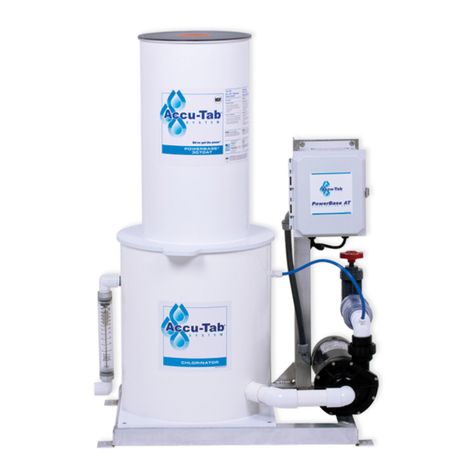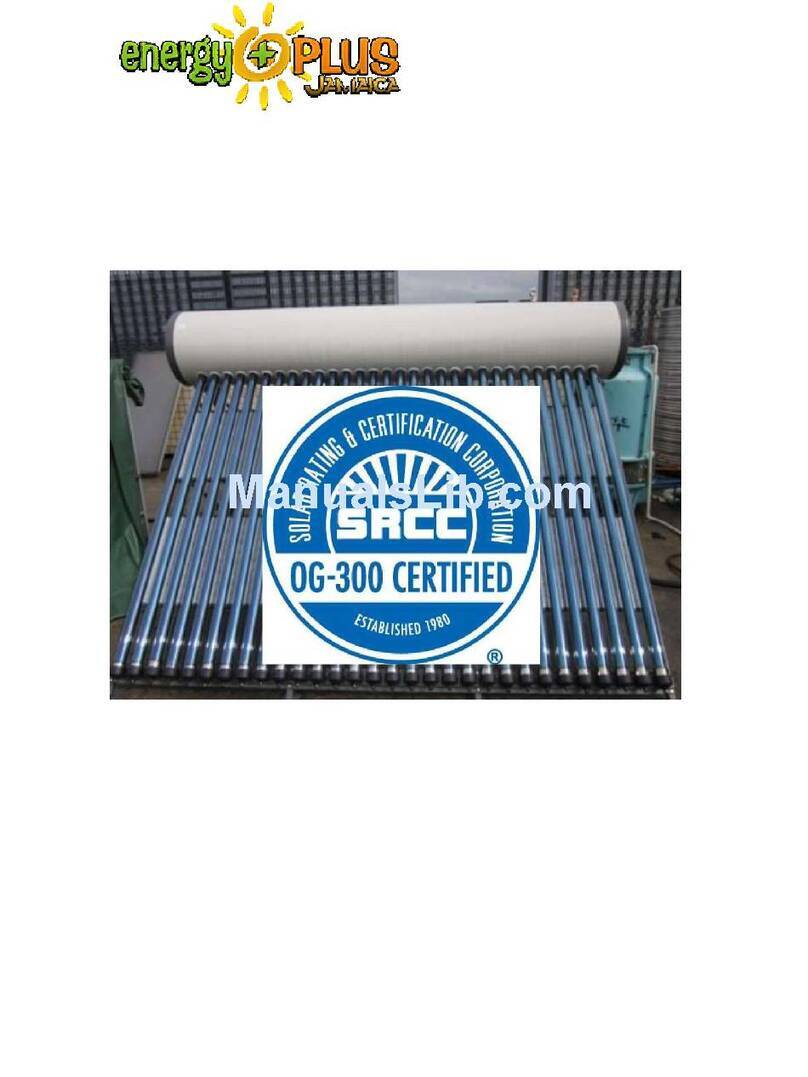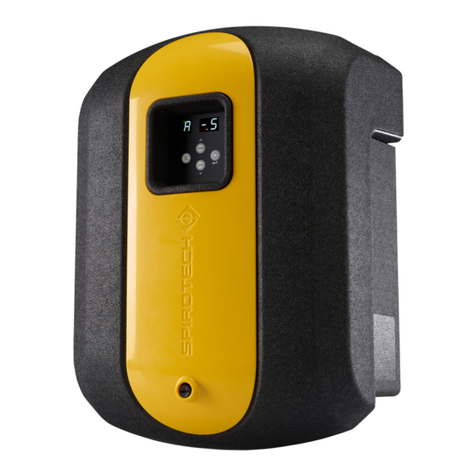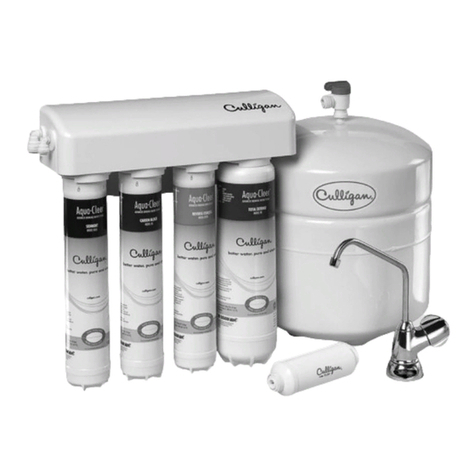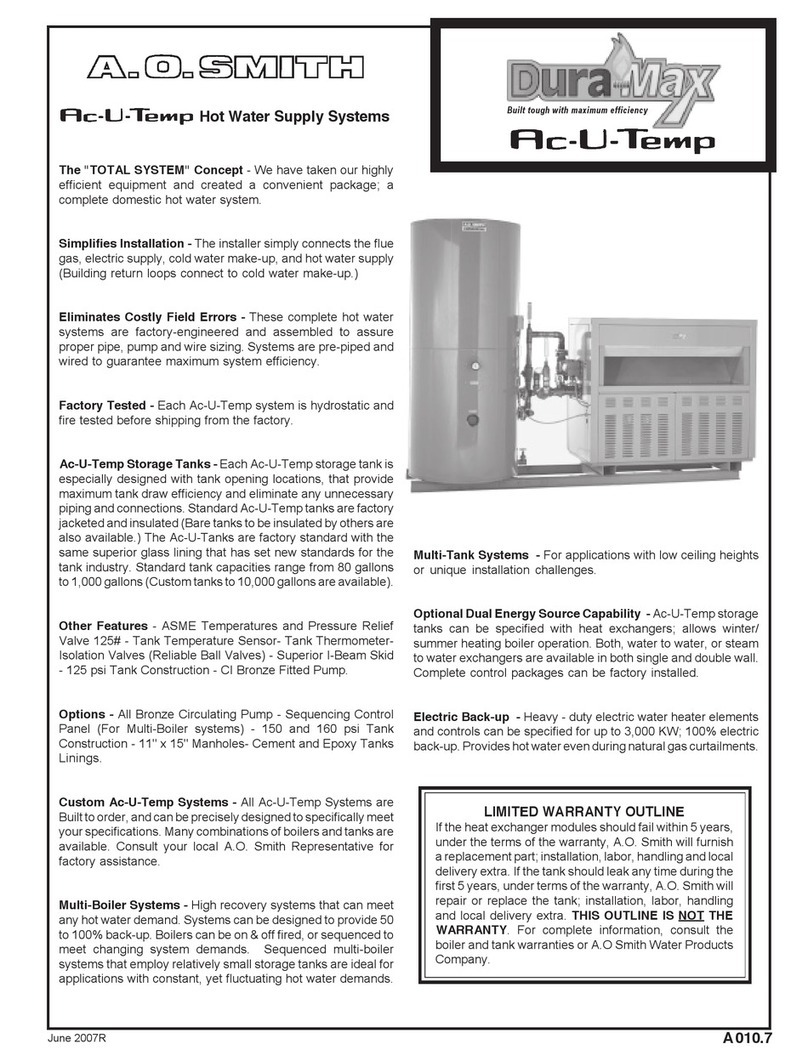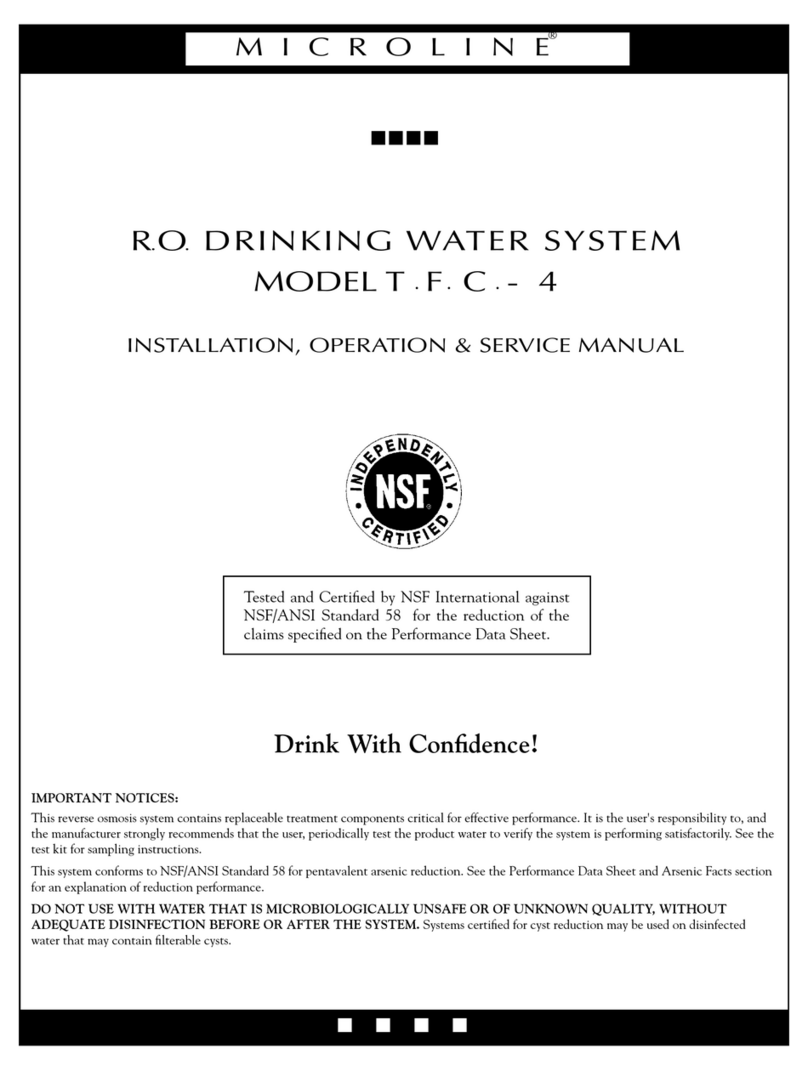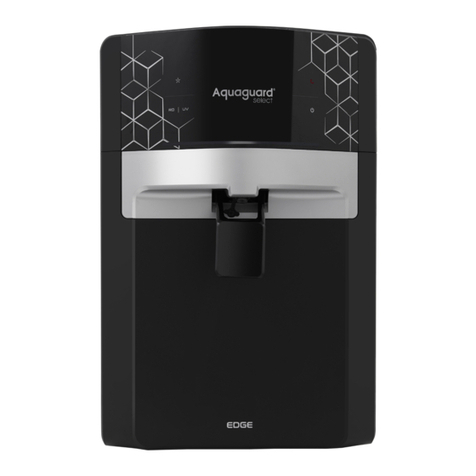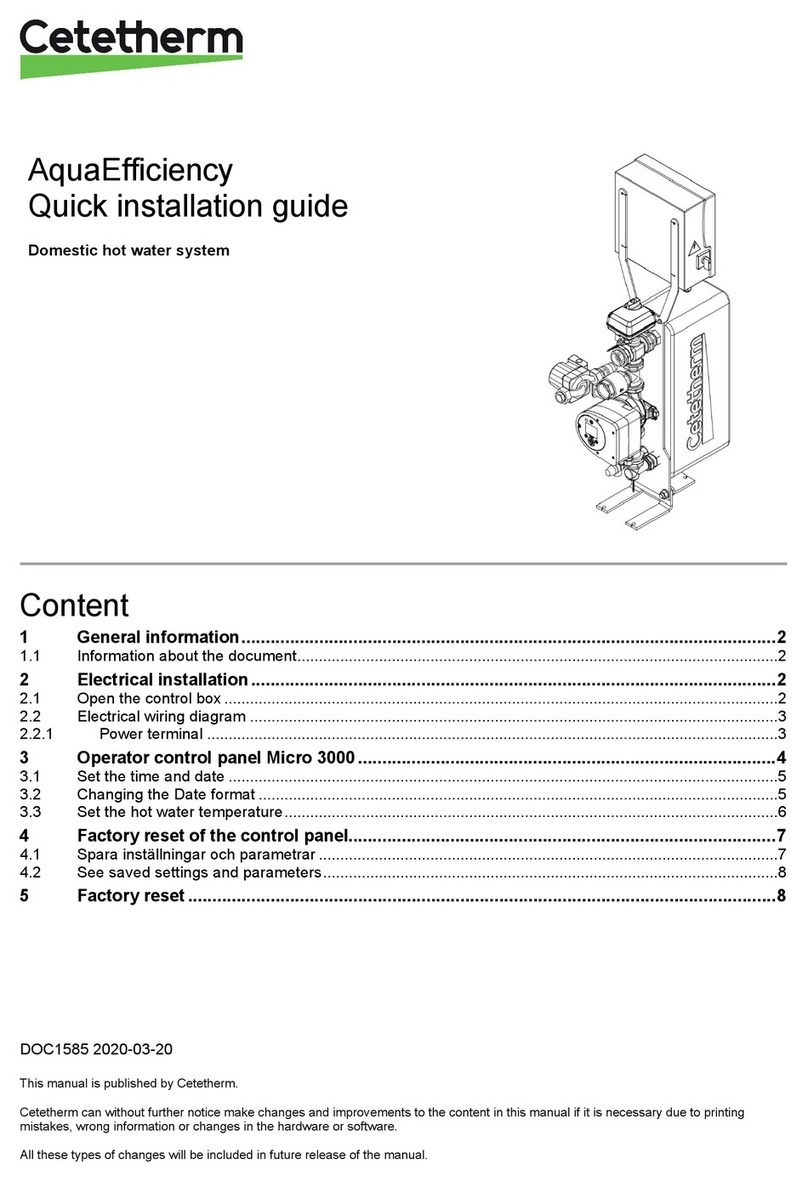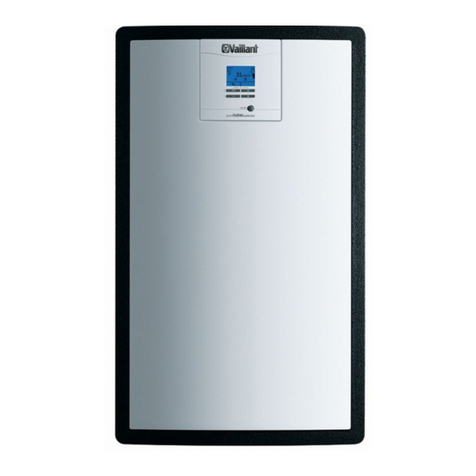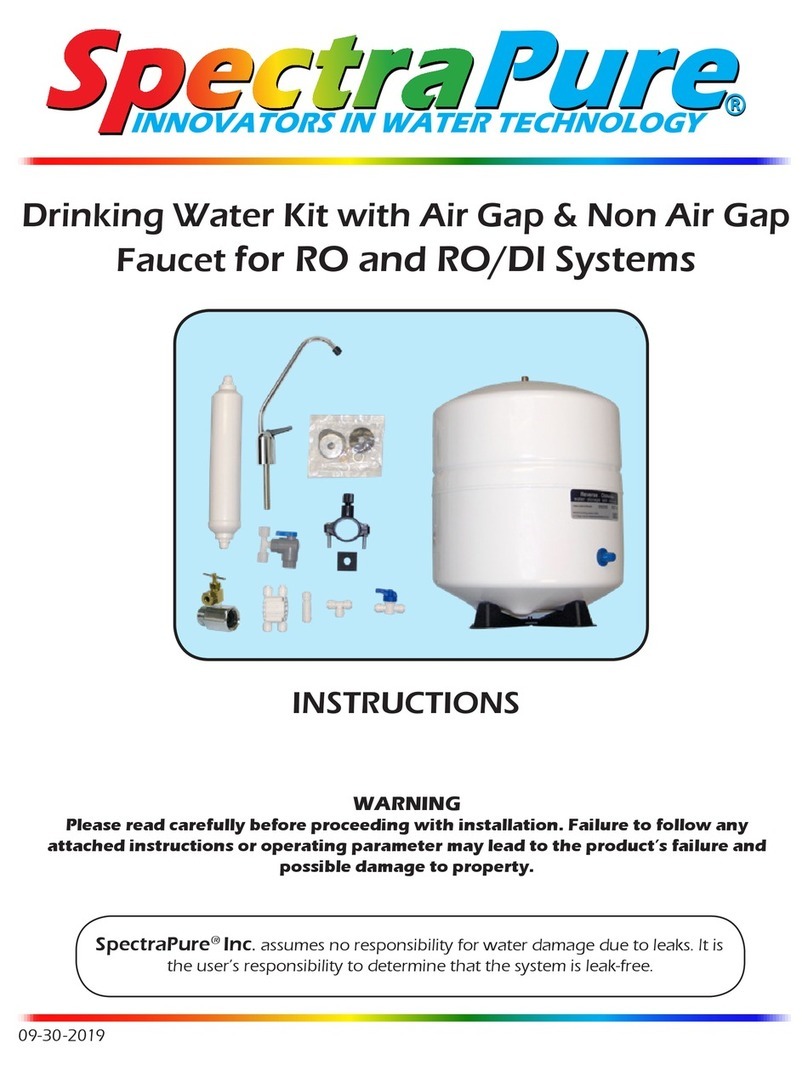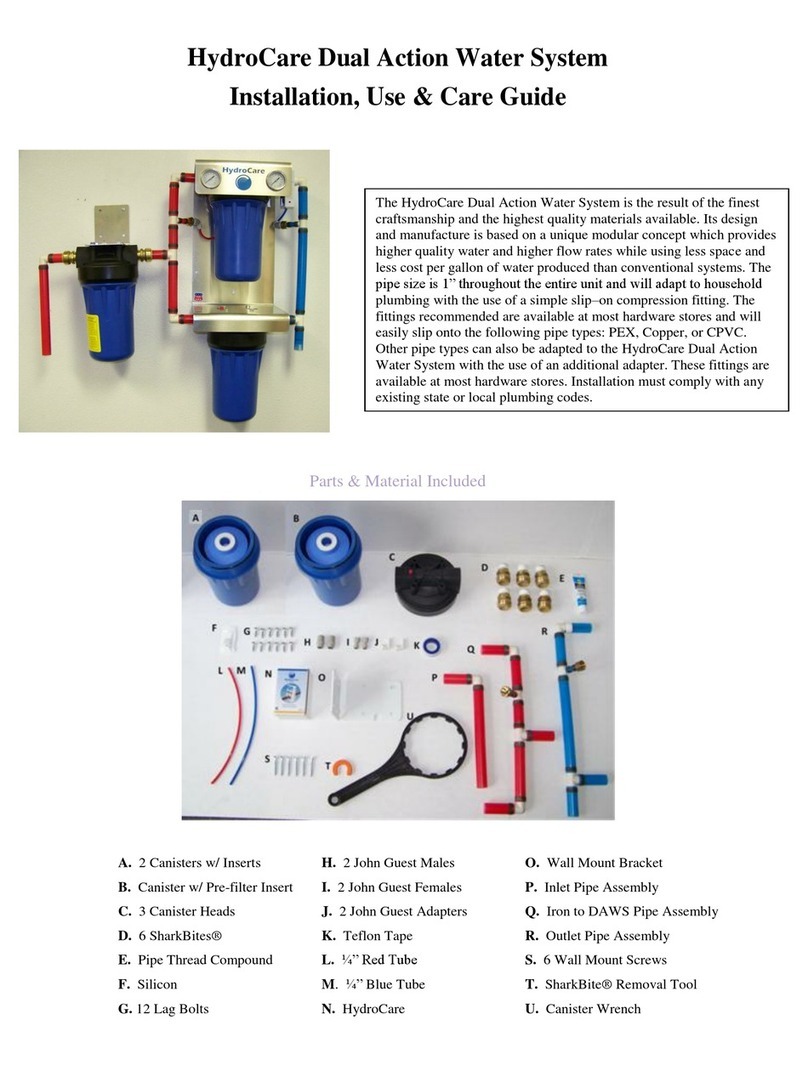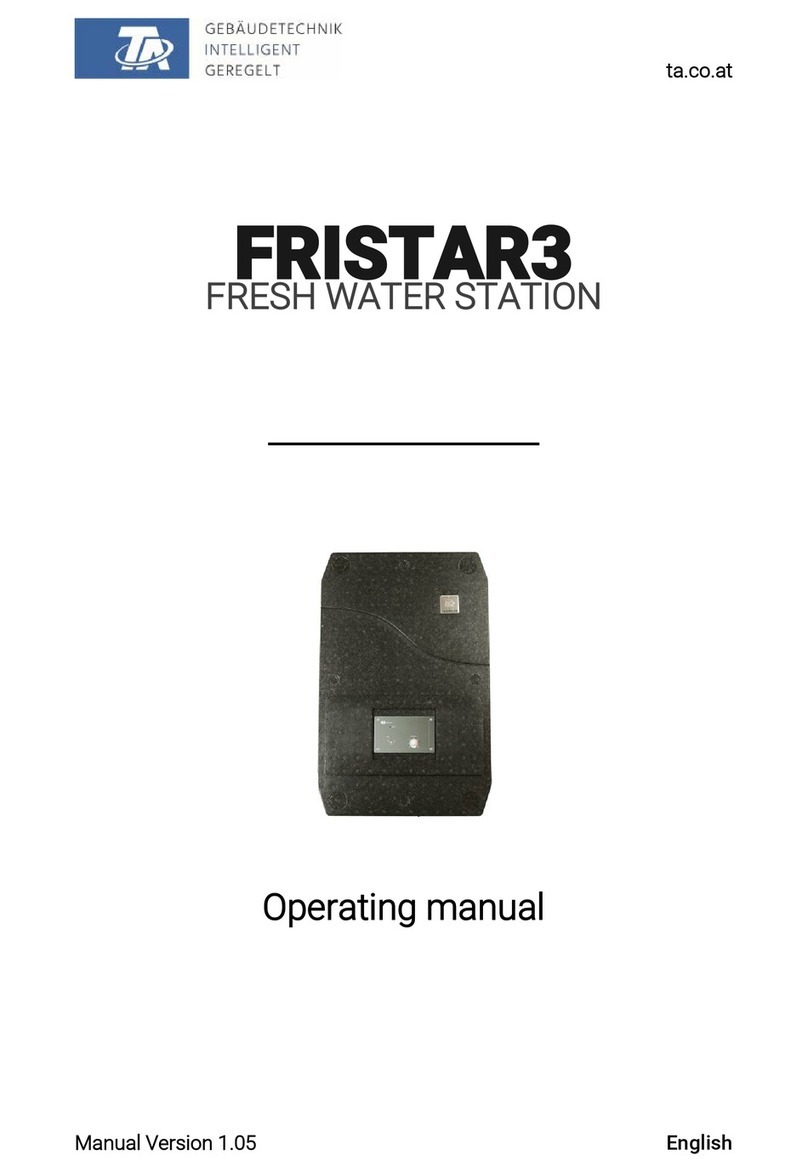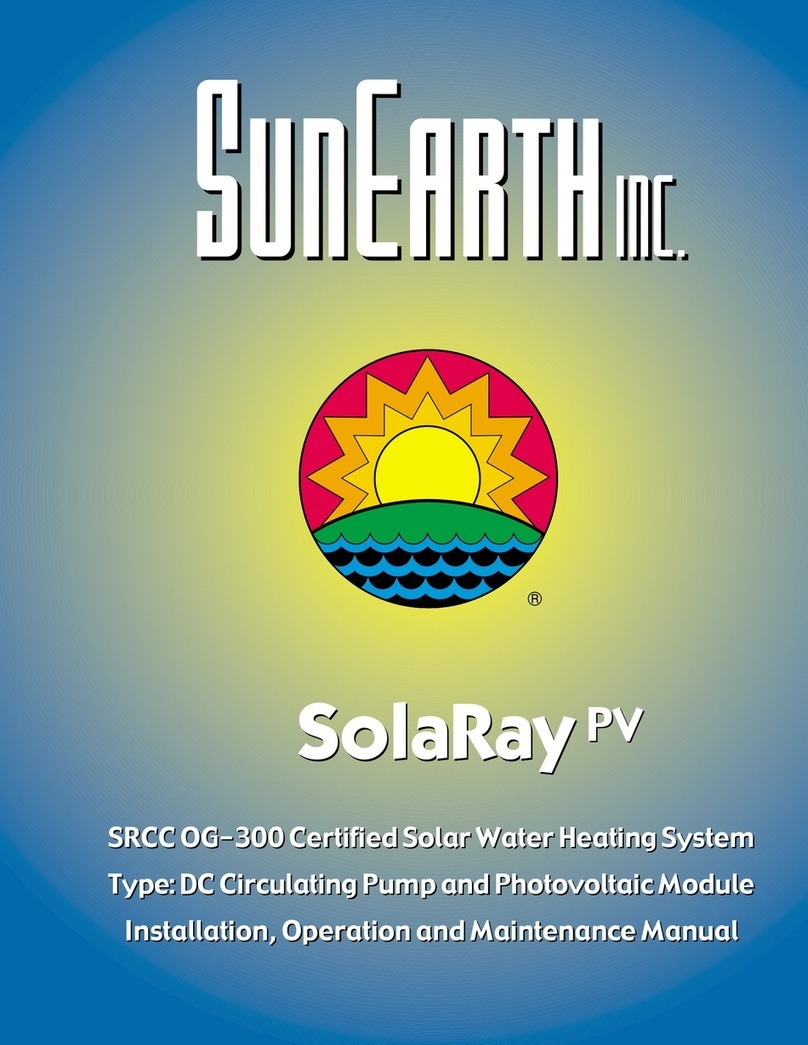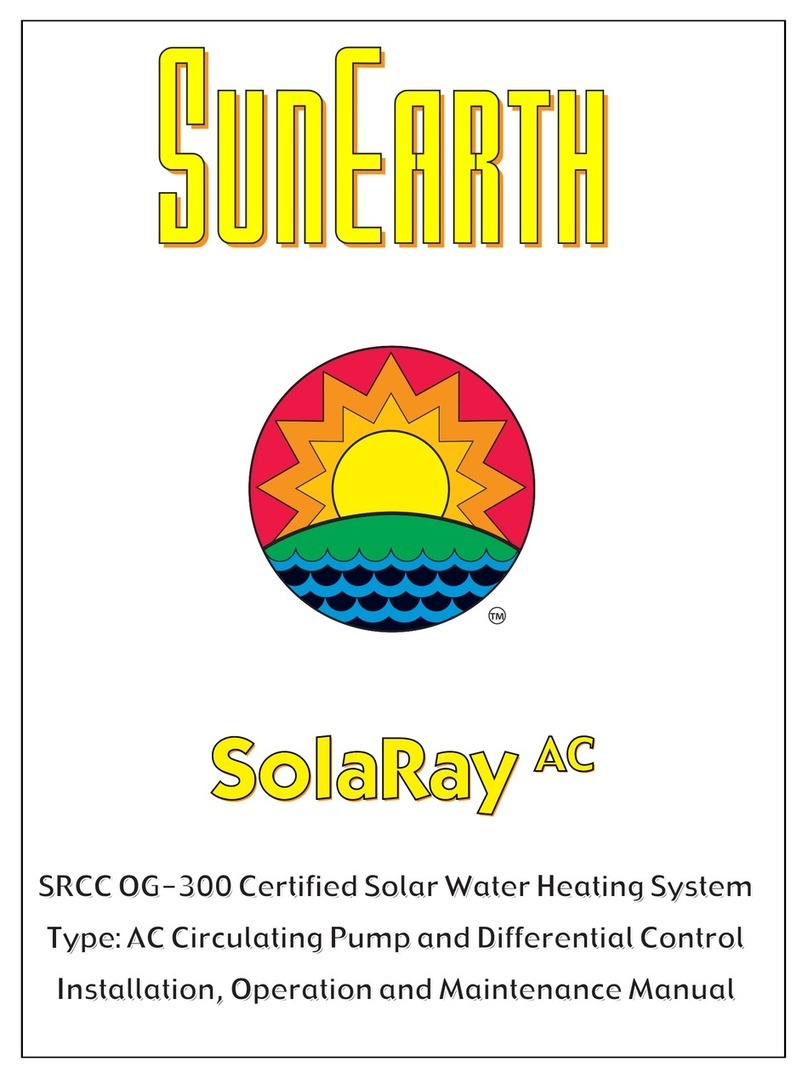
SunEarth Glycol Instructions © SunEarth Inc
Section: Installation
Installing the Temperature Sensor
1. Strap the PT1000 probe sensor to the
copper pipe at the collector outlet using
a stainless steel screw clamp or use a
SunEarth thermal well.
2. For sensor to operate correctly it must be
isolated from exterior conditions. All of the
exposed copper, as well as the sensor
itself, needs to be completely covered with
insulation and UV jacketing.
Pipe Runs
Use copper or stainless steel tubing sized for
the array size and run lenghts. All pipes should
be wrapped with insulation. We recommend
Elastomeric insulation. Outdoor pipes should
also be jacketed with UV protection material or
some other means to protect it from moisture
and ultraviolet deterioration. All pipes must be
well supported or they will sag. Sagging pipes
may trap water. The hanger should spread the
load so that the insulation is not compressed.
Installing the Tempering Valve
Refer to manufacturer’s instructions for
information on installing the tempering valve.
Installing the Differential Control
Your SSXXL system is automated by the
differential controls located in the control box.
Place sensors as shown in Figure 1. The control
for the solar loop uses a sensor installed at
the outlet of the collector array and a sensor
at the coldest part of the the atmospheric tank.
The potable loop uses a sensor placed on the
cold in line between 2 closely positioned tees
leading to 2 of the ball valves at the top of
the SSXXL. Install the other sensor at the
top of the atmospheric tank. Ensure that the
tank volume does not drop below the position
of the tank sensor.
Page 5
Check Collector Loop for Leaks
1. Before the system has been charged, open
all shut-off valves on the collector loop.
2. Apply 100 psi of pressure for 15 minutes.
Any drop in pressure during that time
indicates a leak.
3. Find the source of the leak and repair it.
Repeat this procedure until the loop holds
pressure.
Charging the System
1. Flush the system with water to clean out
any debris or sediment from the pipes and
collectors.
2. Connect the outlet of a transfer pump via a
hose to the ll valve.
3. Open the ll valve.
4. Open the drain valve. Connect the drain
valve to a bucket.
5. Fill the bucket with the appropriate mixture
of propylene glycol and water.
6. Run the pump. Continue running the pump
until you do not see air bubbles in the
coolant.
7. Turn off the pump. Let the system sit for ten
minutes.
8. Discharge any air caught in the air trap.
9. Repeat previous steps until no air is
discharged.
10. Close drain valve.
11. Continue charging until it reaches
the necessary pressure for the system’s
conguration.
12. Close the ll valve.
13. Turn off and disconnect charging pump.
Do not use plastic piping
PEX, PVC and other forms of non-metal pipes will burst
at solar temperatures. Only use correctly sized copper
or stainless steel pipes in solar heating system on both
the solar and potable water loops. All connections to and
from the S
SXXL
must be copper or stainless steel.
